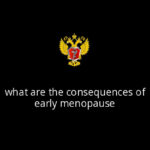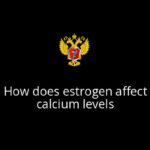Abstract
Estrogen exerts potent inhibitory effects on osteoclast activity by targeting multiple stages of osteoclast development and function. By suppressing osteoclast formation, promoting osteoclast apoptosis, disrupting osteoclast function, and modulating RANKL/OPG signaling, estrogen helps maintain bone mass and prevent excessive bone loss. Dysregulation or deficiency of estrogen can disrupt these mechanisms, leading to increased osteoclast activity, accelerated bone resorption, and decreased bone density, as seen in conditions such as osteoporosis
How does estrogen inhibit osteoclast activity?
Estrogen inhibits osteoclast activity through several mechanisms, ultimately leading to decreased bone resorption and preservation of bone mass. Here’s how estrogen exerts its inhibitory effects on osteoclasts:
- Suppression of Osteoclast Formation: Estrogen inhibits the differentiation of osteoclast precursor cells into mature osteoclasts. It does so by interfering with the expression of key transcription factors and signaling pathways involved in osteoclastogenesis, such as nuclear factor-kappa B (NF-κB), receptor activator of nuclear factor-kappa B ligand (RANKL), and macrophage colony-stimulating factor (M-CSF). By blocking osteoclast formation, estrogen prevents the generation of new bone-resorbing cells.
- Induction of Osteoclast Apoptosis: Estrogen promotes the apoptosis (programmed cell death) of existing osteoclasts, leading to their elimination from bone tissue. It does so by activating apoptotic pathways within osteoclasts and inducing cell death signals. By increasing osteoclast apoptosis, estrogen reduces the number of active bone-resorbing cells and limits their ability to degrade bone matrix.
- Disruption of Osteoclast Function: Estrogen interferes with the function of mature osteoclasts, impairing their ability to resorb bone tissue. It does so by altering the expression and activity of proteins involved in the bone resorption process, such as matrix metalloproteinases (MMPs), cathepsin K, and tartrate-resistant acid phosphatase (TRAP). By disrupting osteoclast function, estrogen inhibits the breakdown of bone matrix and prevents the release of calcium and other minerals into the bloodstream.
- Modulation of RANKL/OPG Signaling: Estrogen regulates the balance between receptor activator of nuclear factor-kappa B ligand (RANKL) and osteoprotegerin (OPG), two key regulators of osteoclast activity. It suppresses the expression of RANKL, the primary activator of osteoclast differentiation and function, while increasing the production of OPG, a decoy receptor that inhibits RANKL signaling. By shifting the RANKL/OPG ratio in favor of OPG, estrogen reduces osteoclast activation and bone resorption.
Verified by: Dr.Diab (March 29, 2024)
Citation: Dr.Diab. (March 29, 2024). How does estrogen inhibit osteoclast activity. Medcoi Journal of Medicine, 1(2). urn:medcoi:article32890.














There are no comments yet
Or use one of these social networks